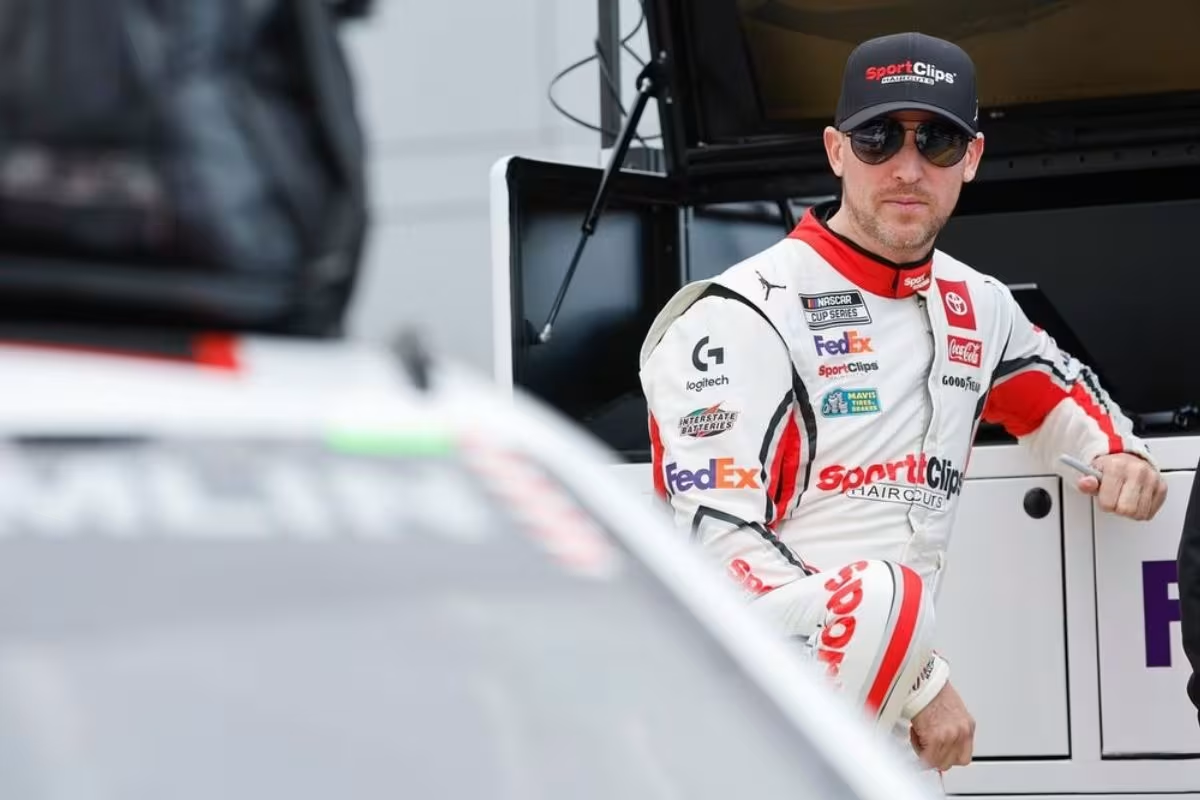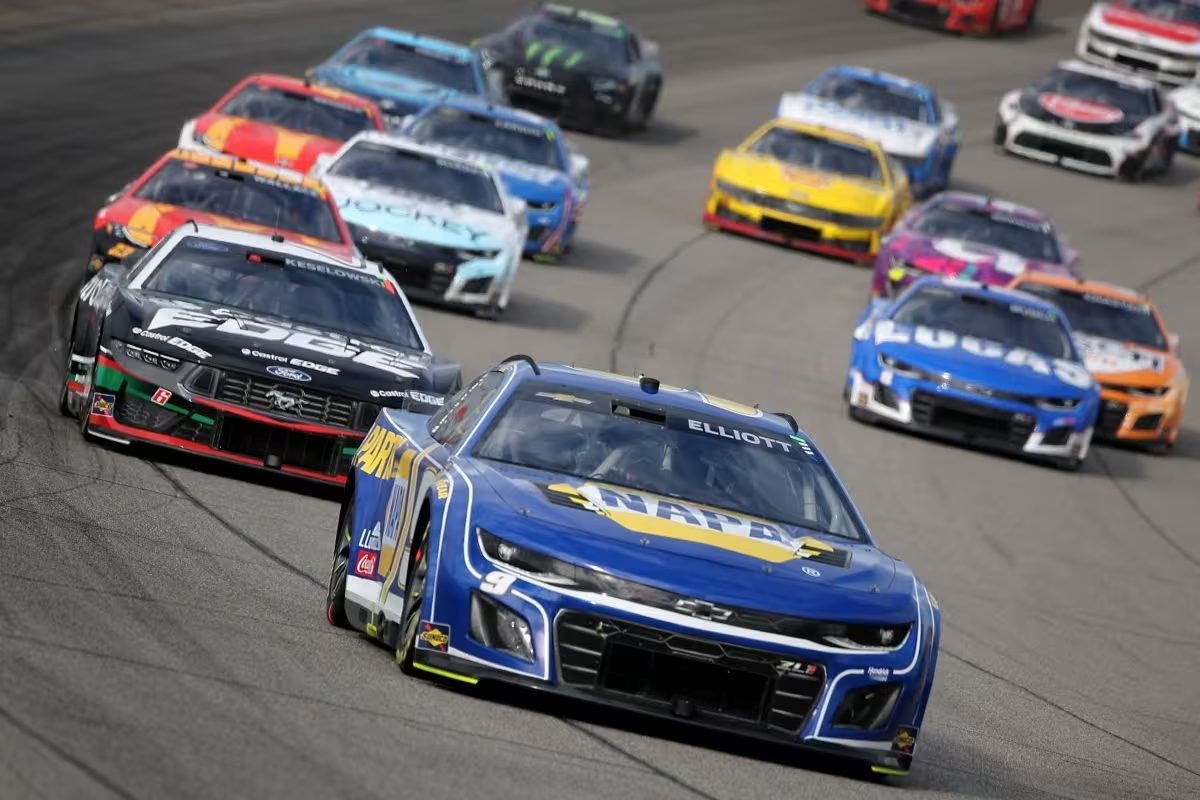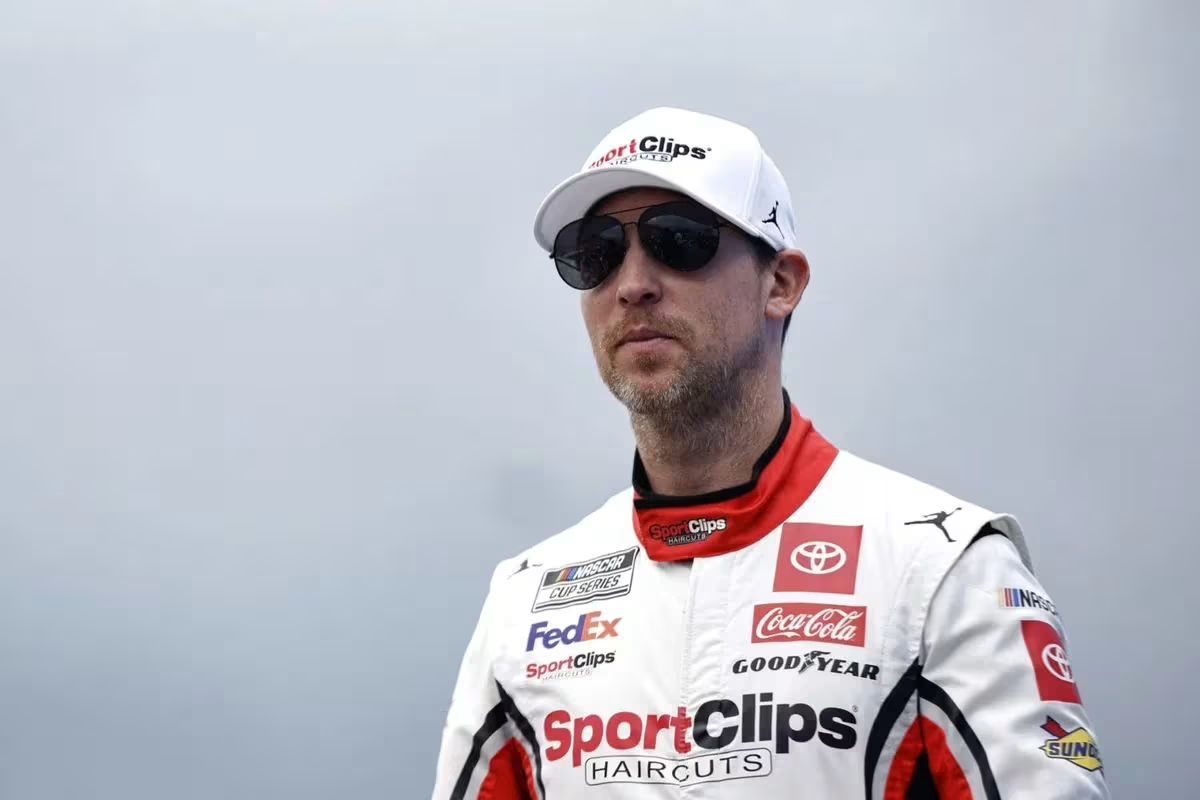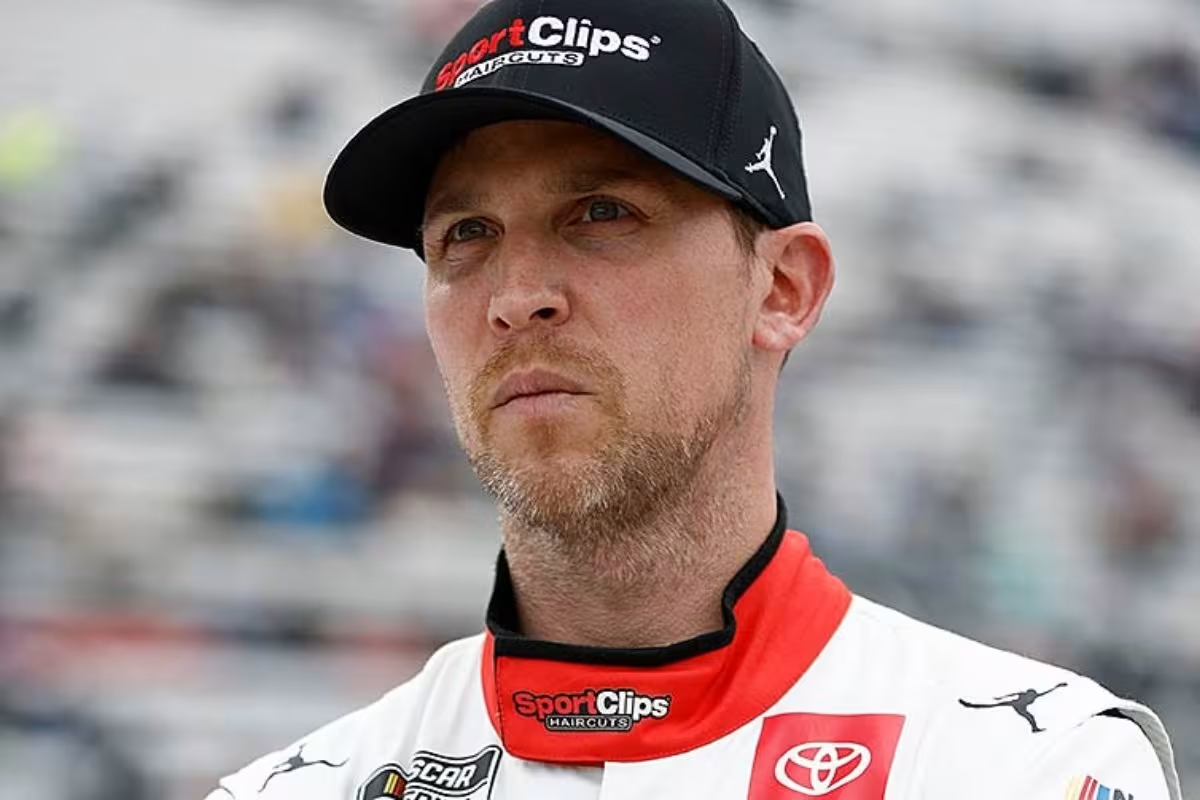Denny Hamlin’s Take on NASCAR Parity: Denny Hamlin‘s recent remarks regarding NASCAR’s growing emphasis on parity raise critical questions about the future of star power within the sport. By highlighting the impact of the Next-Gen cars on driver performance, he suggests that the quest for a level playing field may inadvertently stifle the emergence of standout talents. As uniformity becomes the norm, one must ponder whether this shift will ultimately redefine fan engagement and alter the dynamics that have historically fueled NASCAR’s popularity.
Key Highlights
- Denny Hamlin argues that NASCAR’s emphasis on parity has diminished the visibility and impact of star drivers in the sport.
- The Next-Gen car design promotes uniform performance, limiting opportunities for standout performances and driver differentiation.
- Increased competition and level playing field may lead to emerging talents overshadowing traditional star drivers.
- Hamlin expresses concern that the lack of dynamic racing and overtaking could alienate fans and reduce overall excitement.
- Historical dominance by star drivers is waning as new personalities gain traction in the NASCAR landscape.
NASCAR’s Parity and Star Power
In recent years, the landscape of NASCAR has undergone a notable transformation, characterized by a pronounced emphasis on parity among teams and drivers. This shift is largely attributed to the introduction of Next-Gen cars, which are designed to standardize performance across the board. The intent was to improve competition, but the consequence is a dilution of individual star power, as drivers find it increasingly challenging to distinguish themselves in a field where mechanical advantages have been minimized.
Previously, differences in car specifications allowed certain teams to utilize their engineering skill, leading to dominant performances and the emergence of iconic figures within the sport. However, with the new regulations, the competitive balance has resulted in a landscape where standout performances are less frequent. As Denny Hamlin articulated in his podcast, this parity has inadvertently “killed star power.”
Fans are drawn to NASCAR not merely for the sport itself but also for the personalities and narratives that emerge from it. The ability of a driver to consistently outperform rivals plays a vital role in cultivating a fanbase.
While the intention behind promoting parity is commendable, it raises questions about the long-term implications for NASCAR’s identity. As the sport grapples with its evolving dynamics, the challenge lies in recapturing the allure of individual brilliance while maintaining a competitive environment.
Hamlin’s Critique of Next-Gen Cars
The implications of NASCAR’s push for balance become increasingly evident through Denny Hamlin’s critique of the Next-Gen cars. Hamlin articulates a profound concern that the uniformity achieved by these vehicles may inadvertently diminish the sport’s star power. He argues that when all competitors possess similar capabilities, the distinction between elite drivers becomes less pronounced, leading to a more monotonous racing experience. Specifically, he notes the challenges faced during the Bristol night race, where closely matched cars hinder overtaking and tactical maneuvering.
“But with that, you kill star power, because if everyone’s the same, who are your stars, right? You need the best to go out there and win.”
“It’s just a challenge at that track when you have cars that all run the same speed. Good luck! You’re just not going to create passing that way. That’s the downside to parity and the downside to star power—things like that, right?” – Hamlin
Hamlin’s reservations center on several key points:
- The Next-Gen car design promotes fairness, yet this has resulted in a lack of dynamic racing.
- The emphasis on track position has intensified, diminishing the thrill of overtaking.
- Uniform speeds across cars restrict opportunities for drivers to demonstrate their talent.
- The overall excitement of races may be compromised, potentially alienating fans.
This critique highlights a delicate balance NASCAR must navigate; while fostering competition is vital, it is just as important to maintain the allure of star drivers who can captivate audiences with their unique skills and tactics.
“The fundamental design of this next-gen car is to create a more equal field, and while I think it has created more equality, it’s just become more of a track position race than ever.” – hamlin
If the trend towards balance continues unchecked, the sport risks losing its most charismatic figures, ultimately affecting its long-term appeal and viability. Hamlin’s insights serve as a significant reminder that while fairness in performance is a worthy goal, it should not come at the cost of the individual excellence that has historically defined NASCAR.
Hamlin’s Perspective on Racing and Star Drivers
Although NASCAR’s emphasis on parity aims to create a more competitive environment, Denny Hamlin emphasizes the necessity of distinguishing star drivers to maintain the sport’s allure. Drawing parallels with other professional sports, Hamlin points out that franchises like the Kansas City Chiefs and Baltimore Ravens consistently attract prime-time viewership due to their star athletes. This observation highlights a vital aspect of sports entertainment: fans are inherently drawn to the personalities and talents that define the competition.
“There’s a reason why the Chiefs and the Ravens always play prime-time games, right? Because they have the stars, and people tune in to watch them.” – Hamlin
Hamlin articulates a concern that the current design of NASCAR vehicles limits the potential for differentiation among drivers. “You’ve got to have cars to pass,” he states, echoing a sentiment that without distinctive performance capabilities, the unique skills of top drivers become obscured. He suggests that NASCAR must find inventive ways to enhance its star drivers, ensuring that their expertise is visible and celebrated on the track.
“You’ve got to have cars to pass. There are not enough; like Chris Gabehart said, there are not enough things for us to work on to really differentiate the speeds of the cars.” – Hamlin
The challenge lies in determining how to effectively differentiate these stars from the rest of the field. Hamlin’s perspective calls for a reevaluation of how the sport identifies and promotes its elite competitors.
This raises significant questions: Should NASCAR introduce performance incentives, or perhaps adjust regulations to allow for more vehicle customization? Ultimately, as the sport evolves, maintaining a balance between competitive equity and the prominence of star drivers will be essential for sustaining fan engagement and the overall excitement of NASCAR racing.
Impact of Lulu on Hamlin’s Season
As Denny Hamlin navigated the complexities of his season, the arrival of his new dog, Lulu, became an unexpected focal point of both humor and scrutiny within the racing community. Initially, Hamlin’s season appeared to spiral downward following Lulu’s introduction; fans and commentators similarly speculated about the correlation between the pup’s arrival and his performance challenges.
The narrative took a sharp turn after an early season win at Bristol was nullified, leading to notable repercussions for both Hamlin and his team.
The racing landscape shifted for Hamlin in several ways:
- A nullified victory due to compliance issues with Toyota Racing Development
- A hefty $100,000 fine for the crew chief
- An uncommon streak of finishes outside the top 10
- A crucial fourth-place finish in the Bristol playoff race that revitalized his championship hopes
Despite the premature jokes about rehoming Lulu, Hamlin’s fortunes began to change after the Bristol playoff race. This performance not only salvaged his standing in the playoffs but also reignited his quest for the championship.
The narrative surrounding Lulu serves as a unique lens through which to view Hamlin’s season—a blend of humor and adversity that ultimately galvanized his resolve.
Hamlin’s Performance Outlook and Future Prospects
Energized by a revitalizing performance at Bristol, Denny Hamlin’s outlook for the remainder of the NASCAR season appears increasingly optimistic. With five top-10 finishes in his last five races at this challenging track, Hamlin has showcased a consistent ability to navigate the subtleties of Bristol, which often foreshadows a driver’s potential for success in subsequent races.
This newfound momentum is vital as he aims to shift from perennial contender to champion.
The mental aspect of Hamlin’s season has also shifted positively, particularly with the recent successful integration of Lulu into his racing life. Once seen as a potential jinx, her presence now coincides with a stronger points performance, hinting at a turning tide.
As the season progresses, the key questions revolve around whether Hamlin can maintain this upward path amidst intensifying competition. The Cup Series is notoriously unforgiving, and parity among teams has reached unprecedented levels, making each race a test of strategy, skill, and sometimes, sheer luck.
News in Brief: Denny Hamlin’s Take on NASCAR Parity
The discourse surrounding NASCAR’s increasing emphasis on parity, as articulated by Denny Hamlin, raises critical questions regarding the balance between competitive equity and the preservation of star power within the sport. While uniform performance among drivers may improve competitiveness, it risks diluting the unique identities of standout talents. This transformation potentially alters fan engagement and the comprehensive dynamics of NASCAR, necessitating a careful evaluation of how to maintain both excitement and a vibrant roster of star drivers in the evolving landscape.
ALSO READ: Denny Hamlin Slams HMS Drivers for Playing It Safe at Bristol





Hamlin’s problem is he is a has been, the younger drivers are taking over, just like he did when he started. He can’t stand the fact that he is washed up. Every time he looses a race or has a dnf it’s always some body else’s fault he is done but won’t except it